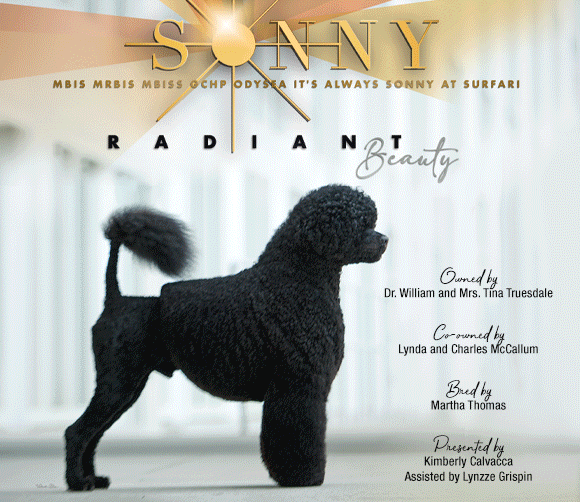Click here to read the complete article
168 – May, 2025
By Lori Sternola
In my return to dog shows after a 25-year break, I have noticed a trend that seems pervasive. In looking at the larger breeds in the groups (not including Terriers) which are most tightly defined by purpose–Sporting, Hounds, Working, Herding–we seem to be converging to a standardized vision of “good movement” which may or may not be appropriate to the breeds this generic vision seems to encompass.
The Portuguese Water Dog standard calls for “forward striding, well-balanced movement” in a dog that is off-square and is a “swimmer and diver of exceptional ability”. The Boxer is a square dog with a gait that is “firm yet elastic, the stride free and ground covering… with a powerful drive”. The Alaskan Malamute is “not intended for speed trials” and is “structured for strength and endurance” with a gait that must be “steady, balanced, tireless, and totally efficient”. Descriptions of angulation in each breed are equally unique to their purpose. They’re all Working Dogs, with a similar mission of working for or with man. But their specific “job”, and therefore structure, stamina, and movement, are intentionally–and significantly–different. So why are we so frequently seeing examples of all three of these breeds flying around the ring at the same speed with similar movement?
?I’m not picking on these breeds. The same can be observed across numerous breeds in all four of the groups I mention above. And I’m not suggesting the issue is universal to all dogs in any particular breed. But speaking as someone who hasn’t watched this slowly evolve over time, I can tell you the stark contrast between breed-specific movement 25 years ago and what I’m seeing today is jarring. I recently found myself asking someone “why are some Harriers trying to fly around the ring like Ridgebacks? And for that matter, when did Ridgebacks start moving like Afghans?”
Click here to read the complete article
168 – May, 2025

Short URL: https://caninechronicle.com/?p=326012


